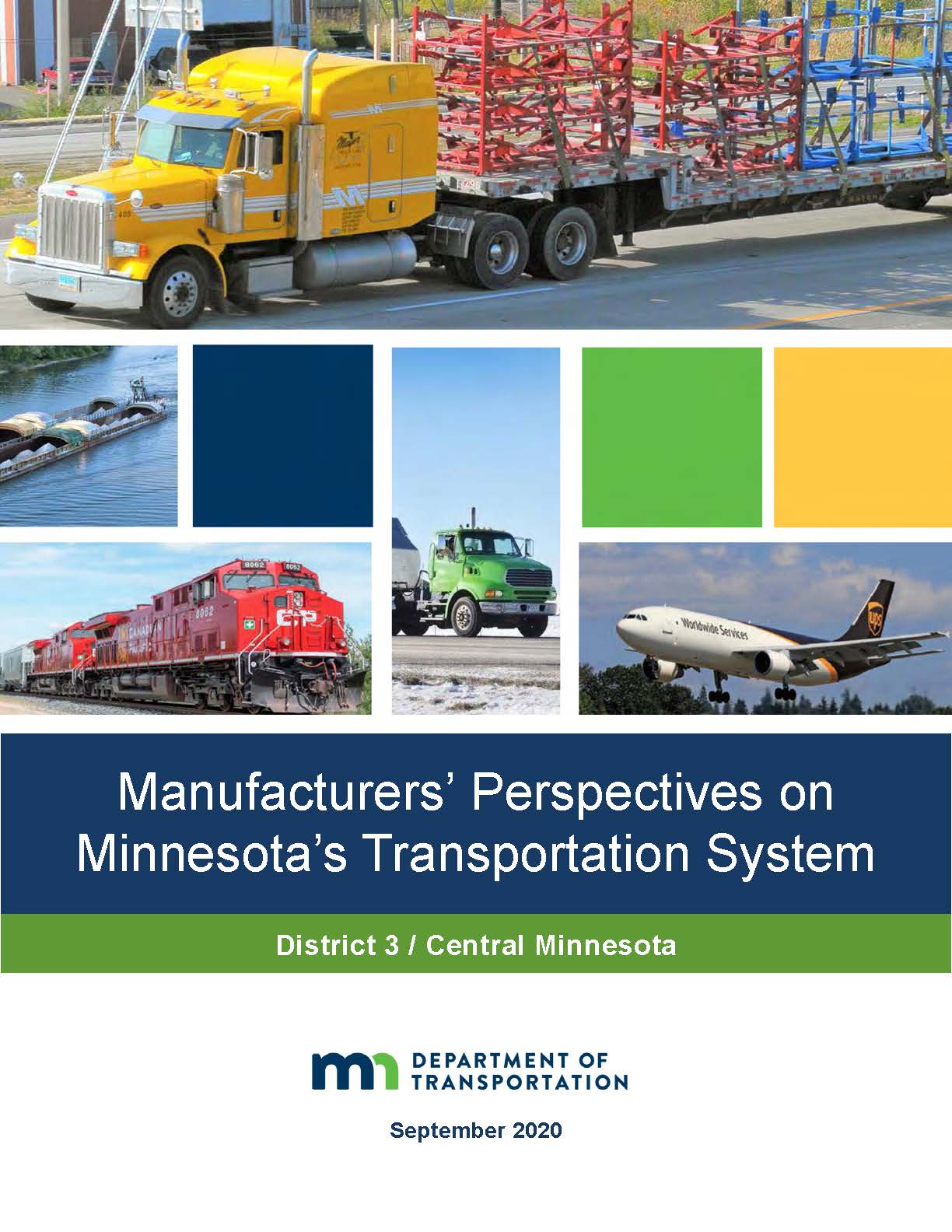Project Summary

In 2013, MnDOT began an initiative to collect qualitative data to understand Minnesota freight users’ perspectives and identify their challenges with the transportation system. This effort focused on manufacturers, as businesses reliant on transportation for their operations and important contributors and employers in the regional economy.
Background
The Manufacturers’ Perspectives (MP) studies have been completed for all MnDOT districts. Key goals of the studies were to build relationships between the district and manufacturers and to grow the districts’ understanding of how manufacturers rely on Minnesota’s transportation system for the freight economy. Other goals included:
- Understanding business-specific freight transportation requirements of traded industry clusters, which are groups ofrelated businesses that bring outside resources to a region and provide stable, higher-paying jobs.
- Meeting with manufacturers and other leading industries in each region to understand their perspectives andpriorities for the transportation system and improve MnDOT’s knowledge of industries that depend heavily onsystem reliability.
- Systematically collecting and analyzing customer information to inform practical, near-term planning and operations,policy development, and investment decision-making.
- Identifying low-cost/high-value opportunities to provide a more responsive transportation system, focusing oninfrastructure, maintenance, communication, and permitting and policy.
- Building relationships among MnDOT, manufacturers, freight transporters, community leaders, and economicdevelopment professionals, to sustain short-term and ongoing transportation system improvements.
Study Completion Synopsis
- Launched in 2013, MnDOT completed a MP study annually in Greater Minnesota, in Districts 8, 4, 2, 1, 6, 7 and 3, respectively, conducting interviews and producing individual district reports for each, from 2014 - 2020.
- The Metro District completed three related projects: a MP Pilot study in 2017, followed by multi-year Urban Freight Perspectives (UFP) – Phase 1 study in 2018 - 2019 and Urban Freight Perspectives (UFP) – Phase 2 study in spring 2020 through fall 2021, focused on major freight corridors in the Metro.
- Cumulatively, MnDOT staff and consultants conducted 698 face-to-face interviews with manufacturers, carriers, and other businesses, in all eight MnDOT districts, between 2013 - 2020.
- Itemized Action Item lists were created from business feedback and input to the studies, enabling districts to look at findings from the study and follow up with manufacturers to address concerns and suggestions where feasible.
Key Findings
- Relatively low-cost changes can have significant, positive impacts on business costs.
- Business preferences can vary depending on what they do and where they are.
- Although similar themes were often identified across districts – such as the importance of smooth pavement and theneed for acceleration lanes, longer turn lanes, and other highway-to-highway features that facilitate large, slow-moving truck merges – the studies also shed light on district-specific transportation needs and challenges.
- These studies are a low-cost method to optimize freight movement and directly connect MnDOT’s planning andbudgeting to business and community needs.
- Overall, the MP studies were successful, with districts increasing their knowledge of freight needs within thetransportation system while building relationships with manufacturers. However, districts noted there werechallenges to maintain those relationships and follow-through on all the issues and suggestions discovered duringthe interview process.
- During follow-up interviews in February - March 2018 with the MP project leads in districts 1, 2, 4 and 8 (after theirMP projects were completed), conversations indicated that there was limited capacity for districts to review andaddress all action items produced from interviews, or maintain relationships with some or all businesses interviewed. Conversations with staff in the other four districts completing the study since then also shared similarconcerns regarding how they would maintain relationships with businesses interviewed and addressmanufacturers’ priorities within planning and construction programming.
- The districts noted that the MP studies successfully served as a strong method of engagement with businesses andprovided a valuable learning opportunity for MnDOT (e.g., district engineers, project managers), helping to informfuture work and to foster better integration of freight in project planning, scoping, program and project delivery.
